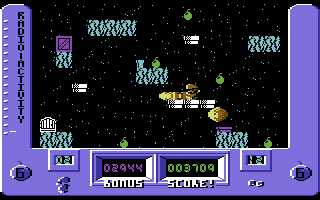

The fusion reaction gives off an incredible burst of extremely powerful neutrons - so powerful that they can split or "fission" atoms of uranium-238 (called " depleted uranium") - which is impossible at lower energy levels. This is the "H" or "thermonuclear" part of the bomb. When this hydrogen-rich mix is heated to 100 million degrees, the deuterium and tritium atoms "fuse" together, releasing enormous amounts of energy. The main fusion reaction involves concentrated deuterium and tritium (both heavy isotopes of hydrogen) - which become spontaneously available when neutrons from the first stage explosion bombard a solid material called "lithium deuteride" located in the central column.

The second stage explosion is due to nuclear fusion in the central column. Boosted or not, however, the only importance of this first-stage explosion is to irradiate and heat the material in the central column to 100 million degrees celsius so that a much more powerful fusion reaction can be started there. Tritium is often added to the centre of the plutonium core to "boost" the fission explosion with some additional fusion energy. The energy release at this stage is mainly due to nuclear fission - because the atoms of plutonium are split.

The first stage, called the "trigger" (the black ball at the top), is a small plutonium bomb similar to the one dropped on Nagasaki in 1945. In the photo, he is standing on the steps of the US Supreme Court holding a cut-away model of the H-bomb.Īn H-bomb is a three-stage weapon: fission, fusion, and then fission again. Howard Morland wrote a magazine article explaining how an "H-Bomb" - or "thermonuclear bomb" - is made, using only publicly available information.
FISSION BOMB HOW TO
How To Make an H-Bomb (or Thermonuclear bomb) How To Make an H-Bomb (or Thermonuclear bomb)


 0 kommentar(er)
0 kommentar(er)
